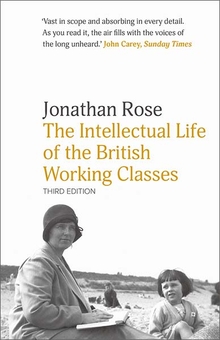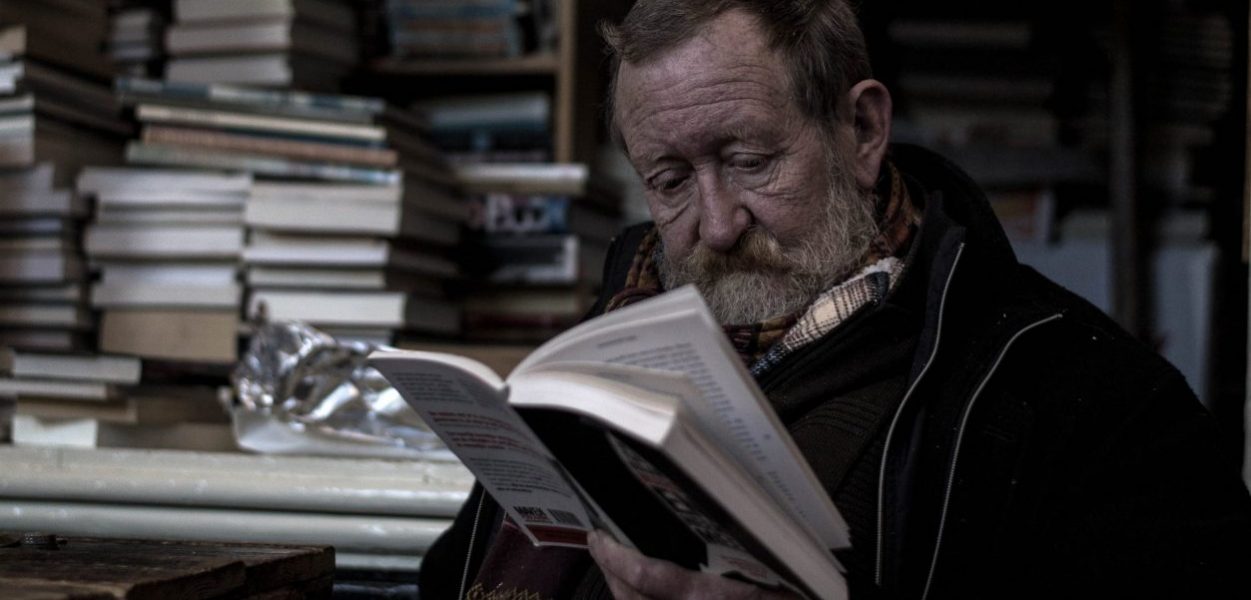The Difference Between Fact and Fiction in the British Working Classes
Jonathan Rose—
Hanoverian Britain had its counterpart of the Bibliothèque bleue—chapbooks offering romances, fairy tales, and other fantastic stories. And a few of their readers, in memoirs, helpfully explained how they read them. As a boy, the poet John Clare (b. 1793) consumed 6d. (sixpence) romances of Cinderella and Jack and the Beanstalk, “and great was the pleasure, pain, or surprise increased by allowing them authenticity, for I firmly believed every page I read and considered I possessed in these the chief learning and literature of the country.” He also had a neighbor who
“believes every thing that he sees in print as true and has a cupboard full of penny books the king and the cobler Seven Sleepers accounts of People being buried so many days and then dug up alive Of bells in churches ringing in the middle of the night Of spirits warning men when they was to die etc each of the relations attested to by the overseers churchwardens etc of the parish where the strange relations happened always a century back where none lives to contradict it such things as these have had personal existences with his memory on as firm footings as the bible history itself.”
As he wrote in his poem, “St. Martin’s Eve,” peasants implicitly accepted the tale of Bluebeard as fact:
“Yet simple souls their faith it knows no stint
Things least to be believed are most preferred
All counterfeits as from truth’s sacred mint
Are readily believed if once set down in print.”
Why were even the most fantastic chapbooks commonly read as true? Consider the factor of intertextuality. If readers’ responses to one text are shaped by other texts, then the second question any historian of reading must ask is: What else were they reading? In this case, three books in particular stand out: the Bible of course, Pilgrim’s Progress, and Robinson Crusoe. In the memoirs of common readers they are frequently discussed together, and men from humble backgrounds, such as miners’ MP Thomas Burt (b. 1837), remembered reading Pilgrim’s Progress or Robinson Crusoe as literal truth.
By way of explanation, it is sometimes suggested that the credibility of a story can be enhanced simply by setting it in print. One old illiterate carter, listening to a reading of reports from the Banbury Guardian on Joseph Arch’s efforts to organize an agricultural laborers’ union, certainly felt that print had more truth value than oral communication:
“The best things be in books, Joe. Look at the letters you rades me out o’ the Banbury Guardian. Who’d think there was any sense in Jeff Southerton to hear him talk? But when he writes a letter to Guardian about the waages or the schoolin’ he has somewh’t to say. He’s wrong, but there’s a pinch o’ sense in it. And they lines you says to me, nobody couldn’t talk like that. It’s the pen, you see.”
But if print inherently enhances credibility, why do more educated readers read it more skeptically? Something else is at work here. Fiction is a frame, a fairly sophisticated literary convention that must be learned. We are not born with this strategy of reading. In their first encounters with literature, the initial assumption of uneducated readers is that the stories must be true. That is the frame we all start with. A joiner’s son in an early nineteenth-century Scottish village recalled that phenomenon when he read his first novel, David Moir’s The Life of Mansie Wauch (1828):
“I literally devoured it. … A new world seemed to dawn upon me, and Mansie and the other characters in the book have always been historical characters with me, just as real as Caius Julius Caesar, Oliver Cromwell, or Napoleon Buonaparte. … So innocent, so unsophisticated—I may as well say so green—was I, that I believed every word it contained. I never saw a novel before. I did not know the meaning of the word fiction. My little mind was in a state of unhesitating receptivity, and so deep an impression did this work of Dr. Moir make upon its fresh incipient tablet that even now I can hardly divest myself of that impression. It is with an effort that I can realise these characters are airy, mythical creations of his exuberant fancy.”
It requires some training to distinguish fact from fiction, and still more training to distinguish fiction from lies. (A failure to draw the latter distinction accounts for much of the early evangelical hostility to the novel.) But if all readers start with the assumption that all stories are true, how do they learn that some stories are not? That happens when one encounters two texts that cannot both be true. If there is a fundamental incompatibility between (say) Genesis and The Origin of Species, Uncle Tom’s Cabin and Native Son, what your parents say and what the television says, then you must select one of the two as more “realistic.” But if a reader is exposed only to a limited range of texts, which basically agree with each other, then there is no basis for concluding that any of them are fiction. And the best-sellers of Hanoverian Britain—chapbook romances, the Bible, Pilgrim’s Progress, and Robinson Crusoe—all told essentially the same story. They were all thrilling tales of adventure, about amazing journeys and terrific struggles, and memorable heroes who, with the help of God, miraculously prevail. The similarities should hardly surprise us. Bunyan, Defoe, and the chapbook tales all drew heavily on biblical themes and imagery. Though Bunyan denounced chapbooks as a sinful distraction, the fact that he freely borrowed their age-old formulas contributed to the astonishing popularity of Pilgrim’s Progress. Robinson Crusoe was frequently reprinted as a chapbook, abridged to as few as eight pages, and illustrated with the same kind of crude woodcuts.
Common readers could therefore read all these texts in the same way: as ripping yarns, but also as gospel truth.
From The Intellectual Life of the British Working Classes by Jonathan Rose. Published by Yale University Press in 2021. Reproduced with permission.
Jonathan Rose was the founding president of the Society for the History of Authorship, Reading and Publishing and a founding coeditor of the journal Book History. He is professor of history at Drew University.
Further Reading:



























